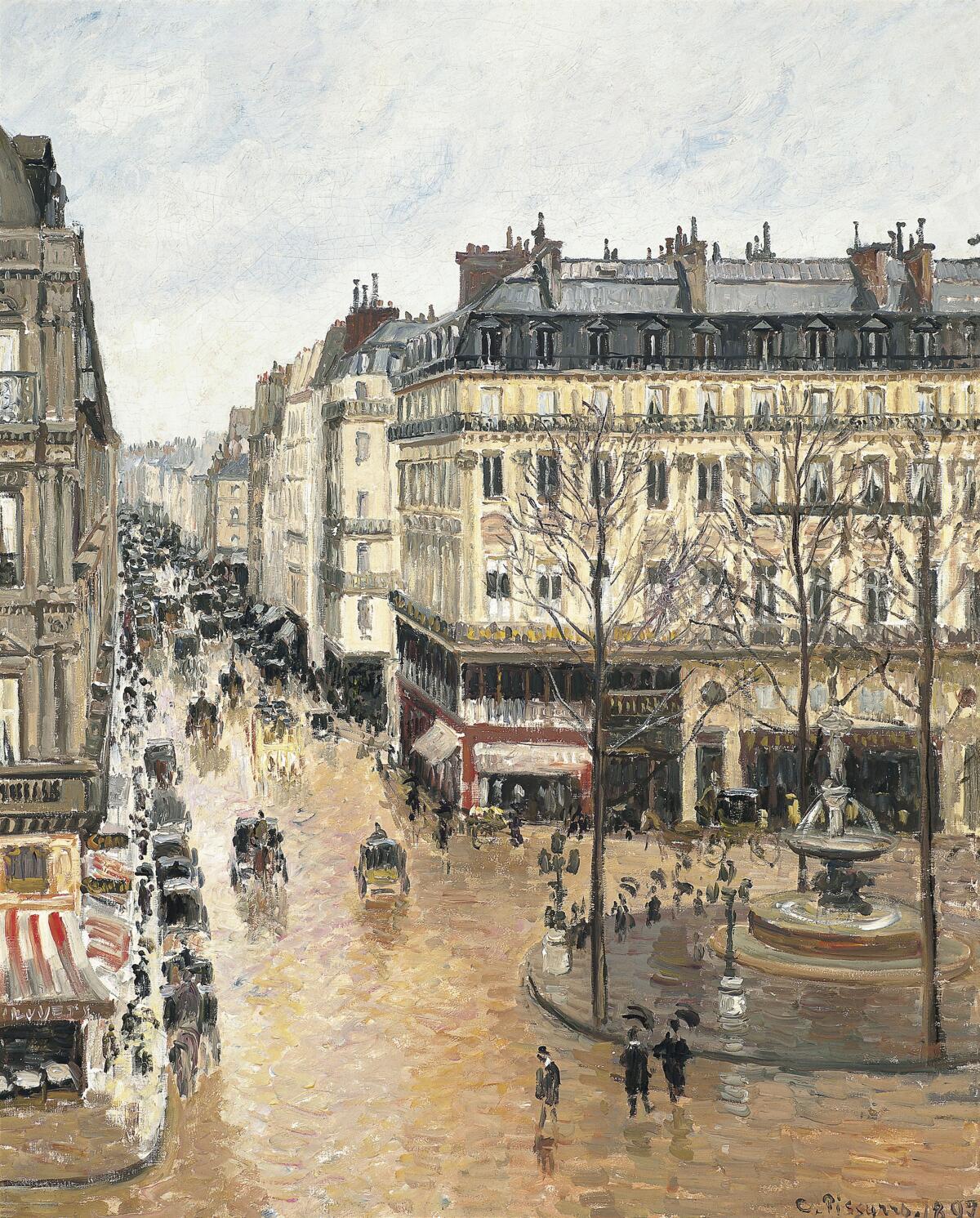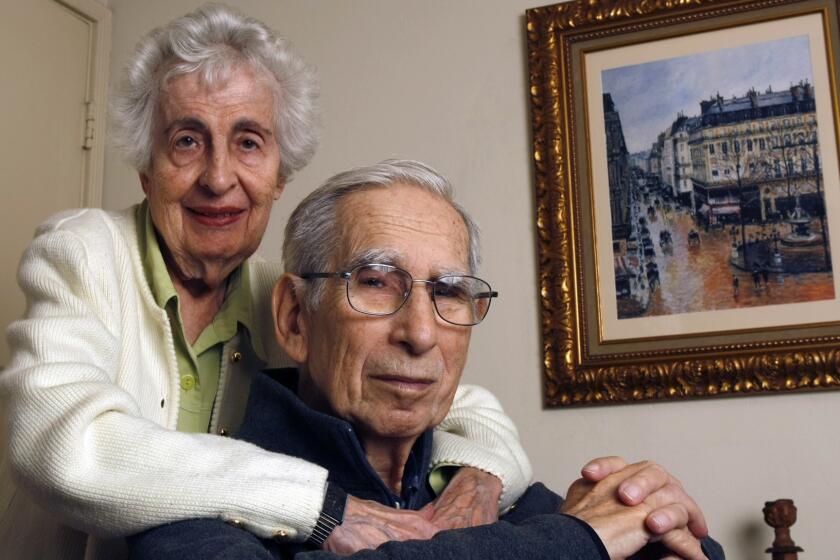Supreme Court rules for California family seeking Pissarro painting looted by Nazis

- Share via
WASHINGTON — The Supreme Court ruled Thursday for a California family seeking to recover a Pissarro painting looted by a Nazi official in 1939 and eventually put on display in a Spanish museum.
The 9-0 ruling does not resolve the dispute but sends the case back to a courtroom in Los Angeles to decide the matter based on California law, which is more favorable to the family.
The justices set aside a ruling that said the painting, “Rue Saint-Honoré in the Afternoon. Effect of Rain,” had been lawfully obtained under Spanish law.
Attorney David Boies, in his appeal to the high court, argued that under California law, “thieves cannot pass good title to anyone, including a good faith purchaser.”
Justice Elena Kagan, writing for the court, said the Cassirer family had spent decades in search of Camille Pissarro’s painting of a Paris street scene that hung in a Berlin apartment when the Nazis took power.
“The path of our decision has been as short as the hunt for Rue Saint-Honoré was long,” she said. “Our ruling is as simple as the conflict over its rightful owner has been vexed. A foreign state or instrumentality ... is liable just as a private party would be. That means the standard choice-of-law rule must apply. In a property-law dispute like this one, that standard rule is the forum state’s (here, California’s).”
For 25 years, a painting by the Impressionist master Camille Pissarro has hung on a museum wall in Spain.
The case was Cassirer vs. Thyssen-Bornemisza Collection Foundation.
“It’s a happy morning,” said David Cassirer upon hearing of the ruling. He carried on the family’s lawsuit along with the Jewish Federation of San Diego.
Last year, the 9th Circuit Court of Appeals, applying a Spanish law, agreed with a federal judge in Los Angeles that the painting should remain with the Thyssen-Bornemisza Collection at a state-owned museum in Madrid.
The painting had been brought to the U.S. illegally after the war, and it was sold by a Beverly Hills gallery in 1951. A gallery in New York arranged for its sale in 1976
to Baron Hans Heinrich von Thyssen-Bornemisza, a Swiss art collector and the heir to a steel empire. In
1993, he sold his collection of more than 775 paintings for $340 million to Spain, where they would be exhibited.
But all the while, Claude Cassirer had been searching for the lost painting that hung on the wall of his grandmother Lilly’s apartment in Berlin. She turned over the painting to a Nazi official in 1939 to obtain a visa out of Germany.
When Lilly Cassirer died, she left the rights to the painting to Claude. In a house outside San Diego, Claude Cassirer and his wife kept a copy of the lost Pissarro on the wall. Then, in 2000, Cassirer received a phone call: The painting had been found. “I was in shock,” he told The Times in 2010.
After being rebuffed by the Spanish government, he filed suit in 2005 in a federal court in Los Angeles seeking to recover the painting, valued at $30 million.
The state-owned museum sought to have the suit thrown out based on the Foreign Sovereign Immunities Act of 1976, which usually protects foreign governments from being sued. But the law has an “expropriation exception” for property confiscated in violation of international law.
But U.S. District Judge John Walter ruled that under Spanish law, the museum had openly purchased the paintings and put them them on display in public for years. While the baron had “reasons for suspicion” that the painting may have been stolen and the museum “may have been irresponsible” in failing to investigate its history, Walter said neither had “actual knowledge” that the painting had been essentially stolen by the Nazis.
Under the court’s ruling Thursday, the case will be sent back to the 9th Circuit, which is likely to return it to a federal judge in Los Angeles.
More to Read
Sign up for Essential California
The most important California stories and recommendations in your inbox every morning.
You may occasionally receive promotional content from the Los Angeles Times.












